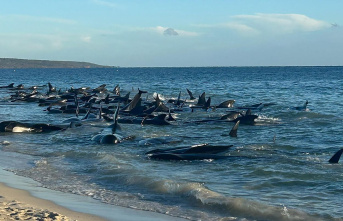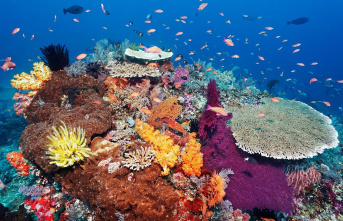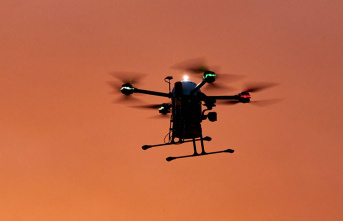The maritime industry is increasingly turning to innovation to improve efficiency, strengthen the supply chain or reduce its environmental footprint. Here are three good examples of innovation that have been put forward by the maritime industry here.
• Read also: Maritime industry: a large pool of positions at more than $125,000 per year
• Read also: Maritime industry: succession, a big pitfall
OPTIMIZE TRAFFIC ON THE SAINT-LAURENT
Commercial vessels traveling on the St. Lawrence face many navigational challenges due, among other things, to sea currents, tides and fluctuations in the widths and depths of the waters.
The Laurentian Pilotage Authority (APL), which manages navigation on the river between Les Escoumins and Montreal – the areas considered the most risky – has developed a traffic optimization system to improve fluidity. .
“The application makes it possible, for example, to determine the shortest route to get from one point to another. We can also tell a ship the best time to arrive at Les Escoumins so as not to have to slow down its speed to Montreal,” explains Alain Richard, captain at the APL.
The system is also useful for passenger boats which, because of their height, can only pass under the Quebec Bridge at low tide. “We are then able to advise them to slow down or increase their speed to arrive at the best possible moment. This saves them from having to drop anchor while waiting for the tide to drop,” adds Alain Richard.
Developed in collaboration with Maritime Innovation, the technology leads to efficiencies in the supply chain and improves navigation safety as fewer vessels are temporarily laid up. Not to mention the environmental benefit.
"As the routes are optimized, the ships use less fuel and therefore emit less greenhouse gases", underlines the captain.
Every year, 9,000 ships pass through this maritime highway. This shows the importance of planning this traffic well.
A MEGABANK OF MARITIME DATA
Since 2016, several industry players – coast guard, port authorities, carriers, etc. – share their data with the Maritime Information System (SIM).
The tool, which was put in place thanks to a joint initiative of the Société de développement économique du Saint-Laurent (SODES) and Innovation maritime, has filled an important gap.
“The industry continuously generates a large mass of information that was not compiled or processed. We wanted to develop a tool that would be able to analyze them so that industry stakeholders could have access to reliable data for decision-making," explains Sylvain Lafrance (inset), CEO of Innovation maritime, the applied research center affiliated with the Institut maritime du Québec (IMQ).
Vessel movements, type of vessels (bulk or containers) circulating on the St. Lawrence, navigation speeds, type of goods transported, loading capacity of the fleet... Every six seconds, the SIM stores a wide variety of information in different databases. They are then filtered, structured and analyzed using powerful extraction and processing tools.
The SIM is an open interface accessible to the entire industry, but also to researchers, organizations and the general public, who can query the various data.
“A municipality could, for example, obtain precise data on maritime traffic for an investment project to improve its port facilities,” says Sylvain Lafrance.
In 2021, Innovation maritime received financial assistance of $900,000 for the development of phase 2 of the SIM to integrate it into the smart economic corridor of the St. Lawrence.
“This will allow us to go further in the use of data by integrating artificial intelligence tools in order to strengthen analyzes and better monitor the evolution of the sector. And from 2023, we aim to expand data collection to the Great Lakes,” reveals Mr. Lafrance.
PRIORITIZING ESSENTIAL GOODS WITH ARTIFICIAL INTELLIGENCE
It was during the first wave of COVID-19 that the CargO2ai system was developed. It took only 10 weeks to develop this technological tool which makes it possible to identify the goods in the containers. The objective: to deliver as quickly as possible the medical equipment, medicines and food products deemed to be priorities in the context of the health crisis.
"The application identifies the containers containing these goods even before the arrival of the cargo ships at the port, which makes it possible to speed up their handling once they are at the dock," explains Daniel Olivier, Director of Strategic Intelligence and Innovation at the Port of Montreal. . These goods are quickly taken care of by the carriers who bring them to their destination. »
CargO2ai was developed through a partnership between the Port of Montreal, CargoM, Scale AI (the Canadian artificial intelligence supercluster) and Ivado Labs, which developed the artificial intelligence algorithm.
Since the solution was implemented, some 7,200 containers have been handled on a priority basis. “The algorithm has become more and more efficient with an efficiency rate that has increased from 80% to 92%,” says Daniel Olivier.
Now that it has proven itself, the technology could be put to wider use.
"We are exploring different avenues," says Daniel Olivier. It could, for example, be useful for speeding up the delivery of critical equipment, such as materials during the construction of a hospital. »
It is also attracting interest abroad. The Port of Montreal is considering a partnership with the Port of Antwerp-Bruges, Belgium, to share its technology.
Developed in an emergency in response to an unprecedented health and logistical crisis, CargO2ai could therefore go a long way.
1












